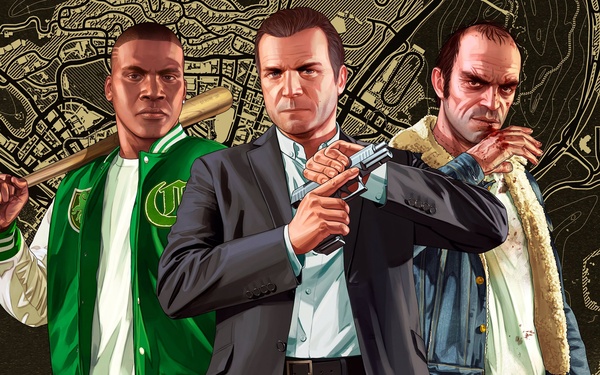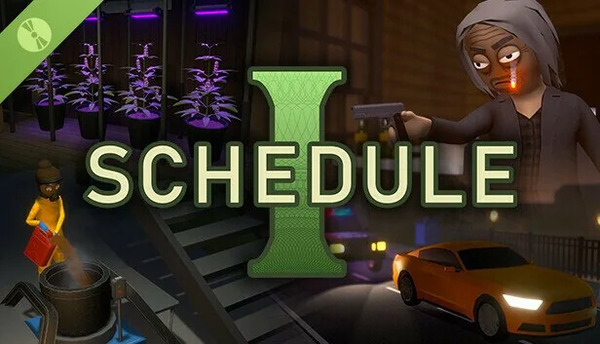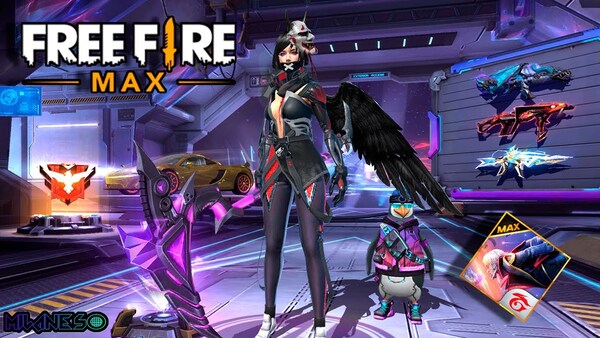Delta Force: A Tactical Shooter Legacy Reborn for a New Era
Delta Force is a name that resonates with gamers who value realism, strategy, and immersive military operations. First introduced in 1998 by NovaLogic, Delta Force carved out a distinct niche in the FPS genre, offering an experience that was drastically different from the fast-paced, arcade shooters of its time. Over the years, the series evolved, declined, and was recently resurrected in the form of Delta Force: Hawk Ops, reigniting interest among tactical shooter fans. This article explores the history, gameplay evolution, strengths, weaknesses, and the future of this iconic franchise.
1. The Birth of Delta Force in 1998
This Delta Force review begins in 1998, when the original game launched during an era dominated by titles like Quake, Half-Life, and GoldenEye 007. What set it apart was its commitment to military authenticity and long-range combat. Instead of close-quarters chaos, Delta Force introduced vast terrains, stealth-focused missions, and real-world ballistics.
The game's visual fidelity may not have matched its contemporaries, but its unique voxel-based engine allowed for expansive outdoor maps. Players had the freedom to approach objectives from multiple angles, using binoculars, silencers, and careful planning. It was a thinking man’s shooter—one that rewarded patience and precision.
Pros:
-
Groundbreaking emphasis on tactical realism
-
Open-world mission design ahead of its time
-
Authentic military atmosphere
Cons:
-
Dated character models and minimal textures
-
Lacked cinematic flair for casual audiences
Rating: ★★★★☆ (4/5)
2. The Voxel Engine: A Technical Leap with Trade-offs
In this Delta Force review, the voxel engine deserves attention. NovaLogic’s proprietary voxel technology gave Delta Force a technical advantage, especially in rendering massive terrains. Unlike polygon-based engines that required powerful machines, voxels made it possible to explore large-scale environments even on modest PCs of the late ‘90s.
While this allowed for incredible range and freedom, close-up visuals often looked primitive. Characters and objects lacked detail. Still, the engine laid the foundation for engaging sniper-based gameplay, which became a hallmark of the series.
Pros:
-
Supported long-range combat and wide landscapes
-
Smooth performance on low-end hardware
Cons:
-
Poor close-quarters visual quality
-
Limited object detail compared to 3D engines
Rating: ★★★☆☆ (3/5)
3. Revolutionary Gameplay Mechanics
A core part of this Delta Force review must highlight its revolutionary mechanics. The game didn’t follow conventional FPS formulas—it removed modern crutches like health regeneration and radar. A single bullet could end your mission. That level of realism demanded a slower, more strategic pace.
Loadout customization before missions added depth, allowing players to tailor gear for stealth or aggression. The gameplay emphasized intelligence and planning—qualities that have since defined tactical shooter subgenres.
Pros:
-
Deep strategy with multiple ways to complete objectives
-
Challenging AI and authentic weapons handling
Cons:
-
High difficulty barrier for newcomers
-
Some missions felt overly punishing
Rating: ★★★★☆ (4/5)
4. Multiplayer Innovation and Community Support
Multiplayer in Delta Force review was groundbreaking, offering online skirmishes with up to 32 players. The emphasis was on cooperation and communication, with game modes like team deathmatch, king of the hill, and hostage rescue.
Additionally, NovaLogic supported player-created content. Fans could design custom maps and scenarios, extending the game’s lifespan. Clans formed, tournaments emerged, and Delta Force became a staple in early online competitive gaming.
Pros:
-
Large-scale, team-based multiplayer battles
-
Active modding community enhanced replay value
Cons:
-
Connection issues were common on dial-up
-
Lacked built-in voice chat or matchmaking tools
Rating: ★★★★☆ (4.5/5)
5. Expanding the Franchise: Delta Force 2, Land Warrior, and Task Force Dagger
Following the success of the original, NovaLogic released several sequels between 1999 and 2002. Delta Force 2 improved on graphics, added weather effects, and included more dynamic AI. Land Warrior introduced character classes and indoor environments, broadening the gameplay scope.
Task Force Dagger took things further by including real-world locations and factions. These titles expanded the series’ appeal, though they started to deviate from the minimalistic roots of the original.
Pros:
-
Expanded game mechanics and variety
-
Indoor/outdoor mission variety
Cons:
-
Visual improvements still lagged behind competitors
-
Some AI behavior remained inconsistent
Rating: ★★★★☆ (4/5)
6. The Cinematic Shift: Black Hawk Down
Released in 2003, Delta Force: Black Hawk Down marked a major turning point. Inspired by the real-life events in Mogadishu and the popular film of the same name, the game leaned heavily into scripted sequences and Hollywood-style action.
The game featured tighter corridors, cinematic storytelling, and more guided gameplay. While it was well-received commercially, it also alienated some longtime fans who missed the open-ended mission design.
Pros:
-
Improved graphics and production quality
-
Strong narrative and voice acting
Cons:
-
Less tactical freedom
-
Shorter missions with linear design
Rating: ★★★☆☆ (3.5/5)
7. Years of Silence and Decline
After Black Hawk Down, the franchise went quiet. Attempts to revive it with titles like Delta Force: Xtreme failed to gain traction. NovaLogic’s limited innovation and marketing reach meant that other franchises—especially Call of Duty and Battlefield—quickly outpaced it.
By the late 2000s, NovaLogic had faded into obscurity. For years, Delta Force existed only in the memories of nostalgic gamers and in online forums where fans lamented its untimely demise.
Pros:
-
Cult classic status kept the brand alive
-
Still used as a benchmark for tactical realism
Cons:
-
No major releases for over a decade
-
Lost relevance in the mainstream market
Rating: ★★☆☆☆ (2/5)
8. A Modern Rebirth: Delta Force: Hawk Ops
In 2023, THQ Nordic and Tencent’s TiMi Studio Group announced Delta Force: Hawk Ops, a bold reboot of the franchise. Built in Unreal Engine 5, the game features high-fidelity visuals, massive maps, and a return to sandbox-style missions.
It includes three core modes: a story campaign inspired by Black Hawk Down, large-scale PvP battles, and PvE co-op missions. Tactical gameplay is back, but with modern accessibility features like smarter AI, intuitive UI, and smoother controls.
Pros:
-
Stunning graphics and immersive audio
-
Faithful to original gameplay style with modern enhancements
Cons:
-
Beta versions had balance issues and bugs
-
Needs strong post-launch support to thrive
Rating: ★★★★☆ (4.3/5)
9. Standing Out in a Crowded FPS Market
With Call of Duty, Escape from Tarkov, Arma, and Battlefield dominating the tactical shooter landscape, Delta Force faces stiff competition. However, it offers a distinct middle ground: not as casual as Call of Duty, but more accessible than Tarkov.
Its emphasis on both realism and structured gameplay may appeal to players seeking intensity without overwhelming complexity. Moreover, nostalgia will play a key role in its adoption.
Pros:
-
Occupies a unique tactical-action hybrid space
-
Rich legacy to draw older fans and attract new ones
Cons:
-
Must maintain long-term updates and anti-cheat systems
-
Will struggle if post-launch support falters
Rating: ★★★★☆ (4/5)
10. What Lies Ahead for Delta Force
The success of Delta Force: Hawk Ops depends on community feedback, regular content drops, and technical polish. If done right, it could lead to a franchise resurgence similar to what Modern Warfare achieved in recent years.
Plans for competitive multiplayer, mod support, and cross-platform play are all in motion. But the developers must balance modern expectations with the series’ roots—prioritizing depth over flash.
Pros:
-
Strong foundations for long-term success
-
Appeals to both tactical veterans and new players
Cons:
-
Risk of becoming too generic in chasing trends
-
Must deliver a smooth launch and consistent updates
Rating: ★★★★☆ (4.2/5)
Conclusion: A Legacy Reforged in Modern Warfare
Delta Force is more than just a nostalgic title; it's a symbol of tactical innovation in gaming history. With the launch of Delta Force: Hawk Ops, the franchise steps into a new era—reclaiming its identity in a crowded genre by offering thoughtful strategy, realistic combat, and high replay value.
Whether you're a returning veteran or a newcomer curious about the roots of tactical FPS games, Delta Force in 2025 is absolutely worth your attention.
Overall Rating: ★★★★☆ (4.2/5)































